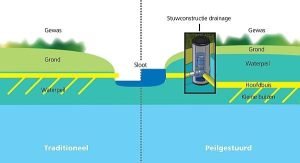Investigation of composite level-controlled drainage as a function of crop yields and surface water quality
Because of climate change, problems related to soil desiccation on the one hand and waterlogged land on the other are increasing. To improve water management on agricultural plots, one possibility is drainage. With conventional drainage, however, there are also significant downsides. Excessive drainage in dry periods leads to yield losses and/or higher costs. At the same time, rapid water discharge also creates a highway of nitrates and phosphates to surface water. Also, Europe also insists on improving surface water quality to meet the objective of the Water Framework Directive. By using composite level-controlled drainage, better water management can be achieved at plot level, which would eliminate the above side effects.

Source: Peel and Maasvallei water board
In traditional drainage, the drainage pipes empty directly into the ditch. In the process, the water level is kept constantly low. That low level is actually too low during a large period throughout the year. Too low in the sense that the farmer does not need to do any work on the field, and the water level can therefore be higher during those periods. That unnecessarily low water level can cause desiccation in dry summer periods, which sometimes has to be dealt with by irrigation.
In compound level-controlled drainage, on the other hand, the drainage pipes discharge into a collector drain pipe. On that collector drain pipe, a 'System van Iersel' can be used to control the water level. Consequently, the farmer can keep the water level high during the period when he does not need to be in the field for work.
A key objective of this project is to examine whether higher crop yields can be achieved via improved water management using compound level-controlled drainage. The capacity of water that a plot with level-controlled drainage can store will therefore be investigated. To obtain an objective assessment of the crop yields, the crops will be monitored during the growing season. At harvest time, yields will be compared quantitatively and qualitatively. We should conduct this trial two years in a row. In this way, we can offer farmers objective and complete information.











